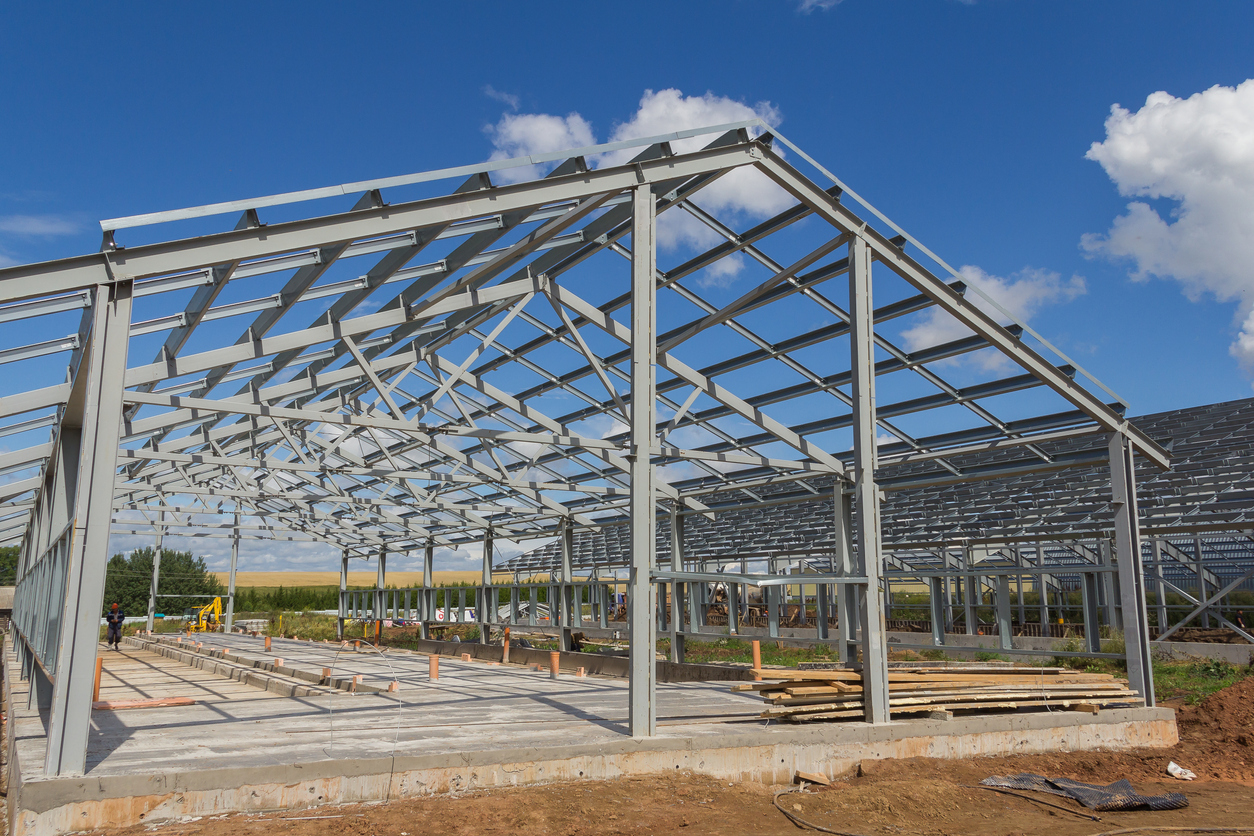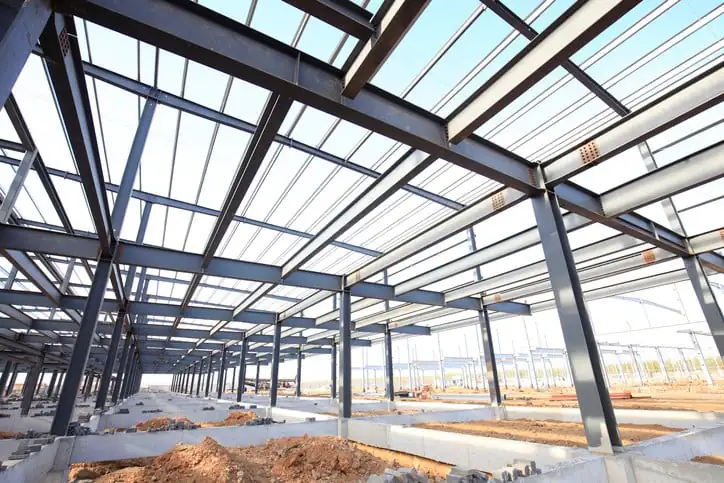Designing Steel Building Interiors: A Complete Guide
Explore various options for customizing steel building interiors. Discover tips and tricks to create functional and aesthetic spaces.
Steel building interiors offer unlimited flexibility and beauty. This article thoroughly explores various ways to customize the interior of steel structures, from framing options to biophilic design. We’ll discuss wall options, ceiling considerations, adding natural light, and suitable flooring choices.
Whether you’re building a warehouse, office, or creative space, this comprehensive guide will help you maximize the potential of your steel building interior. Discover how to create a functional, comfortable, and visually appealing environment within a robust steel structure.
1.A Brief Introduction to Steel Building Customization
Steel buildings have long been known for their strength, durability, and efficiency in construction. However, many are unaware of the extraordinary potential offered by steel building interiors. Customizing the interior of steel buildings opens doors to unlimited creativity and functionality.
The main advantage of steel buildings lies in their flexibility. The open structure allows for various space configurations, from large open work areas to more intimate spaces. With careful planning, steel building interiors can be tailored to meet various needs, whether for industrial, commercial, or even residential purposes.
Customizing steel building interiors also allows for the integration of modern technology and sustainable design. From energy-efficient lighting systems to environmentally friendly materials, steel buildings can be examples of innovation in modern architecture.
Moreover, the ability to change and adapt space over time is a significant advantage of steel buildings. As needs change, the interior can be easily reconfigured without compromising the structural integrity of the building.
In this article, we will explore various aspects of customizing steel building interiors, providing insights and inspiration to create spaces that are not only functional but also aesthetic and comfortable.

2.How Can You Customize the Interior of a Steel Building?
2.1 Framing Options
Framing is the backbone of every steel building interior. Choosing the right frame not only affects the structure but also determines the flexibility and aesthetics of the space.
Open Frame: Open framing is a popular choice for industrial spaces or modern offices. This style showcases the steel structure, creating a raw and authentic look. Open framing also allows for maximum space utilization and flexibility in layout.
Closed Frame: For a more conventional look, the frame can be covered with various materials. This creates a smoother appearance and allows for more decoration options.
Modular Frame: Modular framing systems allow for easy layout changes. This is ideal for spaces that require high flexibility, such as exhibition areas or frequently changing offices.
Mezzanine Frame: Mezzanines can add extra space without needing to expand the building’s footprint. This is very useful for warehouses or retail spaces that need additional storage or office areas.
2.2 Interior Wall Choices
Interior walls play a crucial role in defining space and creating atmosphere in steel buildings.
Drywall: Drywall is a common choice because it’s easy to install and provides a smooth finish. It also offers good sound insulation and can be painted as desired.
Metal Panels: Metal panels provide a stylish industrial look. They are also durable and easy to clean, making them ideal for industrial or commercial environments.
Wood: Using wood can bring warmth into steel interiors. Wood panels or accent walls can create an interesting contrast with the steel structure.
Glass: Glass partitions are ideal for creating spaces that feel open and bright. They are popular in modern offices and can be fitted with frosted film for privacy.
Exposed Brick: Exposed brick walls can create an attractive industrial aesthetic, especially when combined with steel elements.
2.3 Ceiling Considerations
The ceiling is an important element often overlooked in interior design.
Exposed Ceiling: Leaving the roof structure and mechanical systems visible can create an interesting industrial look. This can also increase the sense of spaciousness.
Drop Ceiling: Drop ceilings can hide mechanical and electrical systems, creating a neater appearance. This also allows for better integration of lighting and HVAC systems.
Acoustic Ceiling: Acoustic panels can significantly reduce echo and noise, important for workspaces or public areas.
Skylight: Integrating skylights into the ceiling design can bring natural light into the space, creating a more vibrant atmosphere and reducing the need for artificial lighting.

2.4 Adding Natural Light
Natural light not only saves energy but also improves comfort and productivity.
Large Windows: Installing large windows can flood the space with natural light. This also creates a visual connection with the outside environment.
Clerestory Windows: These high windows allow light to enter without sacrificing privacy or wall space.
Glass Walls: For truly bright spaces, consider full glass walls. These are ideal for creative workspaces or lounge areas.
Light Tubes: For interior areas without direct access to exterior walls, light tubes can bring sunlight into the space.
2.5 Choosing a Biophilic Design
Biophilic design incorporates natural elements into the built environment, enhancing wellbeing and productivity.
Indoor Plants: Integrating plants into interior design not only enhances aesthetics but also air quality. Consider vertical green walls or large pots for floor plants.
Natural Materials: The use of wood, stone, or bamboo can bring natural texture and warmth into steel spaces.
Natural Patterns: Incorporate nature-inspired patterns and textures in design elements such as carpets, wallpaper, or artwork.
Access to Outside Views: If possible, design spaces to maximize views of the surrounding nature.
Dynamic Lighting: Lighting systems that mimic changes in natural light throughout the day can improve comfort and circadian rhythms.
2.6 Flooring Options
Flooring is a crucial element that affects both the aesthetics and functionality of the space.
Polished Concrete: Polished concrete floors provide a clean, modern industrial look. They are also durable and easy to maintain.
Epoxy: Epoxy flooring is a popular choice for industrial environments because it’s resistant to chemicals and easy to clean. It’s available in various colors and patterns.
Wood: Wood flooring can bring warmth into steel interiors. Engineered wood is a durable and stable option.
Vinyl: Vinyl flooring offers various designs, including those mimicking wood or stone, at a more affordable price and with easy maintenance.
Carpet: For areas requiring comfort and sound absorption, carpet can be a good choice. Carpet tiles allow for easy replacement of damaged areas.
Raised Floor: Raised floors are ideal for spaces with lots of cables or mechanical systems, allowing easy access for maintenance.

3.Conclusion
Customizing steel building interiors opens up endless possibilities for creating spaces that are not only functional but also aesthetic and comfortable. From choosing the right frame to integrating biophilic design, every aspect can be tailored to meet specific needs and reflect the unique identity of the building’s users.
The key to success in customizing steel building interiors lies in careful planning and a deep understanding of user needs. By considering factors such as lighting, acoustics, and ergonomics, you can create environments that enhance productivity, wellbeing, and user satisfaction.
It’s important to remember that flexibility is one of the main advantages of steel buildings. Adaptive design allows spaces to evolve with changing needs, making investment in steel buildings a smart long-term choice.
By combining modern technology, sustainable design principles, and creativity, steel building interiors can be examples of innovation in contemporary architecture. Whether you’re building a warehouse, office, or creative space, the potential to create extraordinary spaces within steel structures is truly limitless.


Post Comment